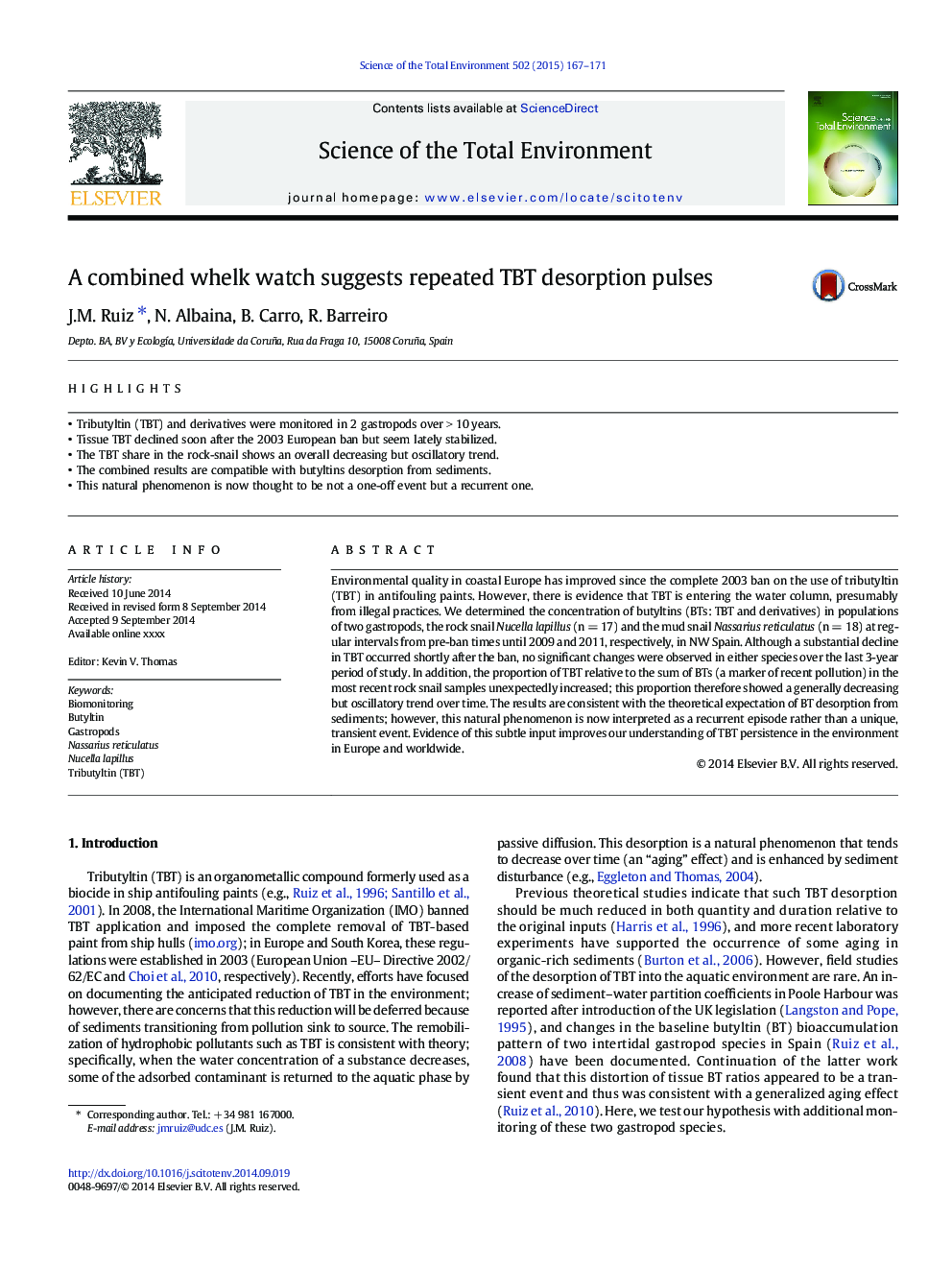| Article ID | Journal | Published Year | Pages | File Type |
|---|---|---|---|---|
| 6328400 | Science of The Total Environment | 2015 | 5 Pages |
Abstract
Environmental quality in coastal Europe has improved since the complete 2003 ban on the use of tributyltin (TBT) in antifouling paints. However, there is evidence that TBT is entering the water column, presumably from illegal practices. We determined the concentration of butyltins (BTs: TBT and derivatives) in populations of two gastropods, the rock snail Nucella lapillus (n = 17) and the mud snail Nassarius reticulatus (n = 18) at regular intervals from pre-ban times until 2009 and 2011, respectively, in NW Spain. Although a substantial decline in TBT occurred shortly after the ban, no significant changes were observed in either species over the last 3-year period of study. In addition, the proportion of TBT relative to the sum of BTs (a marker of recent pollution) in the most recent rock snail samples unexpectedly increased; this proportion therefore showed a generally decreasing but oscillatory trend over time. The results are consistent with the theoretical expectation of BT desorption from sediments; however, this natural phenomenon is now interpreted as a recurrent episode rather than a unique, transient event. Evidence of this subtle input improves our understanding of TBT persistence in the environment in Europe and worldwide.
Related Topics
Life Sciences
Environmental Science
Environmental Chemistry
Authors
J.M. Ruiz, N. Albaina, B. Carro, R. Barreiro,
